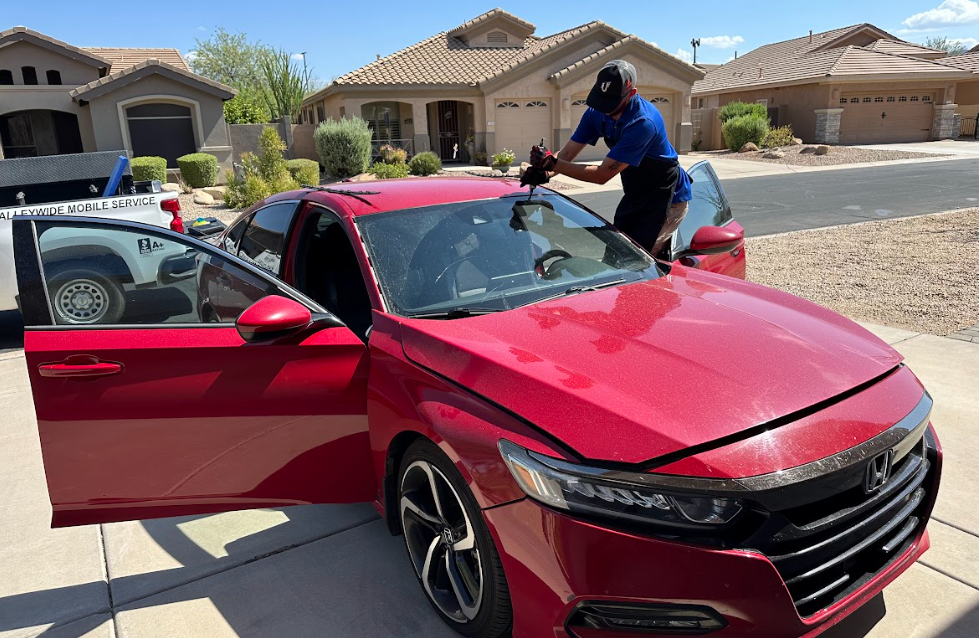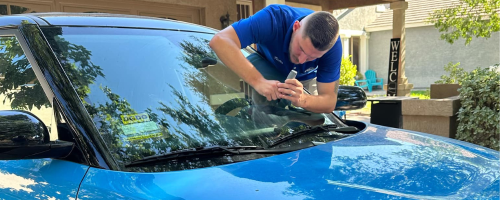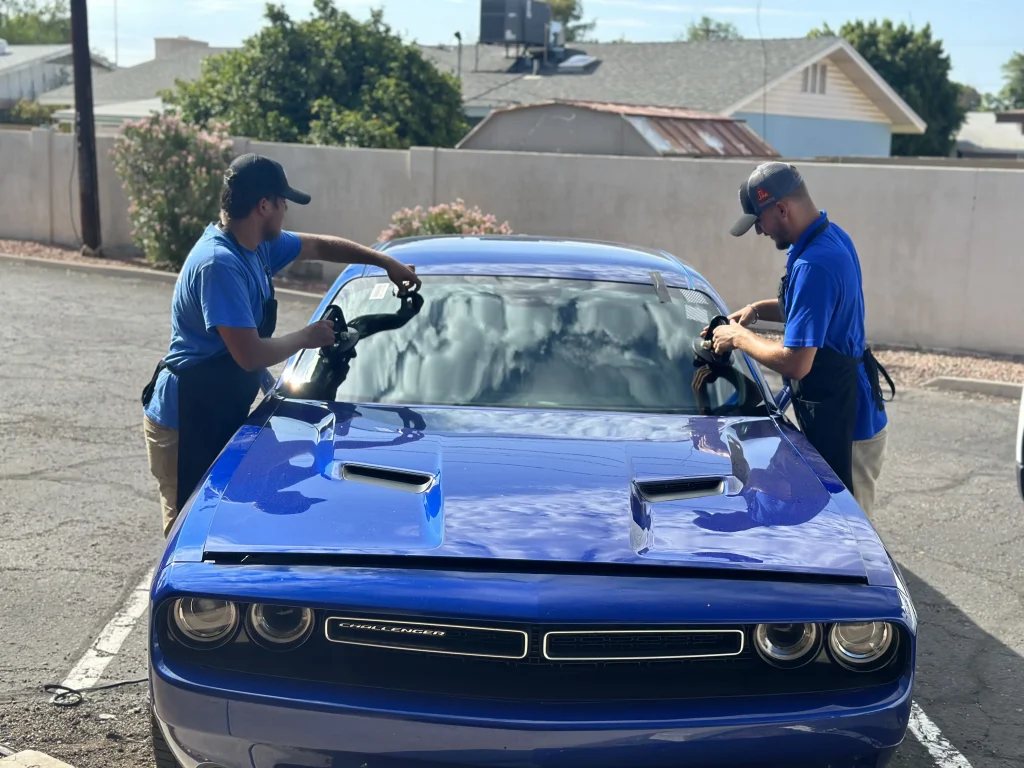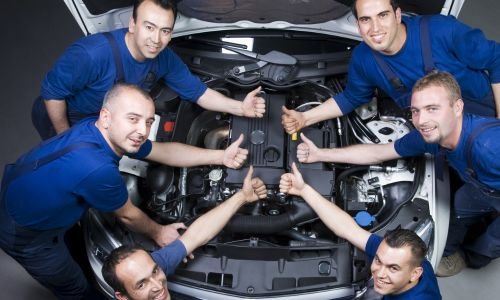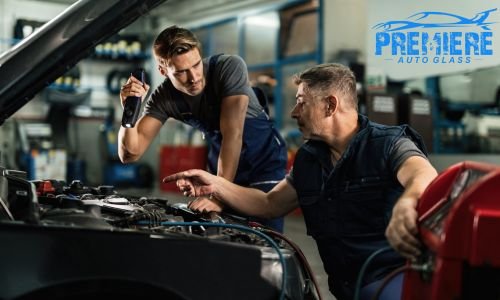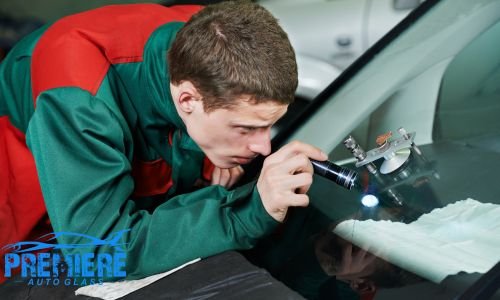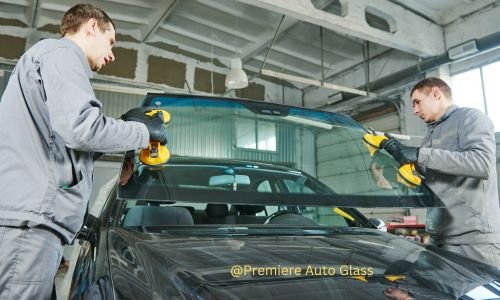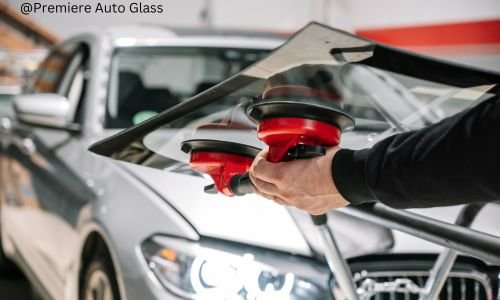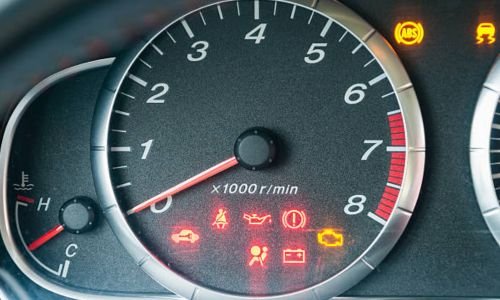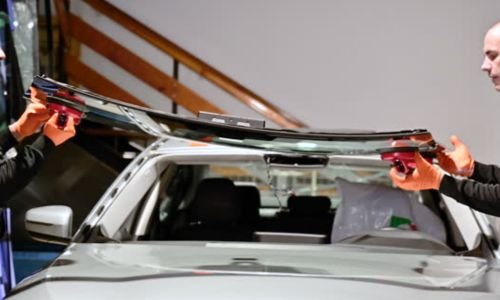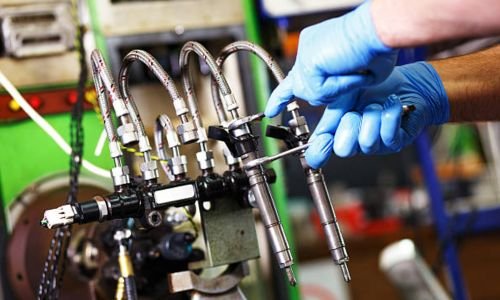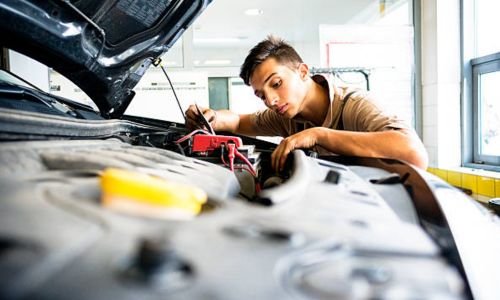In the intricate web of vehicle safety features, one element often overlooked is auto glass. Auto glass plays a crucial role in ensuring the structural integrity of a vehicle and protecting its occupants during accidents. It not only provides visibility for the driver but also acts as a barrier against external elements, making it an essential component of overall vehicle safety. This article aims to shine a spotlight on the pivotal role of auto glass in ensuring the safety of vehicles and their occupants. Explore with us as we dissect the various facets of how auto glass contributes to the overall safety framework.
The Foundation of Vehicle Safety
Auto glass serves as the fundamental element in ensuring the safety of vehicles and their occupants. Without auto glass, drivers would have limited visibility and be exposed to external elements such as wind, rain, and debris. Overall, auto glass is a critical component that cannot be overlooked when it comes to vehicle safety. Understanding its integral role is paramount for anyone seeking to comprehend the broader landscape of vehicle safety.
Transparent Protection
Auto glass provides a clear barrier that shields drivers and passengers from external elements. Maintaining visibility is a cornerstone of safe driving. In addition to protecting against external elements, auto glass also plays a crucial role in maintaining structural integrity. It helps to distribute the force of impact during accidents. It is preventing the collapse of the vehicle’s roof and ensuring the safety of its occupants.
Structural Support for Vehicle Safety
Beyond transparency, auto glass contributes to the structural integrity of the vehicle, playing a crucial role in maintaining the overall strength and stability of the car. Auto glass is specifically designed to withstand high levels of pressure and impact. It also provides an additional layer of protection for the vehicle’s occupants. Additionally, auto glass helps to reduce noise and vibrations, enhancing the overall comfort and driving experience for both drivers and passengers.
Resistance to Impact
Engineered to withstand impacts, auto glass acts as a frontline defense, minimizing the risk of injuries during accidents and collisions. In the event of a crash, the strong and durable nature of auto glass helps to prevent it from shattering into sharp and dangerous shards, further protecting the occupants from potential harm. Furthermore, auto glass also plays a role in maintaining the structural integrity of the vehicle’s roof, contributing to its overall safety during rollover accidents.
U.V. Radiation Shield
Modern auto glass is designed to block harmful ultraviolet radiation, safeguarding occupants from potential skin damage and reducing the risk of skin cancer. Additionally, auto glass can also help to regulate the temperature inside the vehicle by blocking out a significant amount of heat. This not only improves comfort for the occupants but also reduces the need for excessive use of air conditioning, resulting in improved fuel efficiency.
Noise Reduction through Vehicle Safety
Auto glass, when appropriately insulated, contributes to a quieter interior, enhancing the overall driving experience and reducing potential distractions. Furthermore, auto glass with noise reduction properties can also help to block out external sounds such as traffic or construction noise, creating a more peaceful and relaxing environment for the occupants. This can lead to reduced stress levels and increased focus while driving, ultimately improving safety on the road.
Types of Auto Glass and Vehicle Safety Features
Understanding the various types of auto glass and the safety features they encompass is essential for comprehending the multifaceted role they play in vehicle safety.
Laminated Glass
Laminated glass, known for its resilience, consists of multiple layers that hold together upon impact, preventing shattered glass from causing harm. In addition to its protective qualities, laminated glass also helps to reduce noise transmission from outside the vehicle, providing a quieter and more comfortable driving experience. Furthermore, the interlayer of plastic between the glass layers adds an extra layer of security by making it more difficult for potential thieves to break into the vehicle.
Tempered Glass
Found in side and rear windows, tempered glass is designed to break into small, dull pieces, minimizing the risk of severe injuries in case of breakage. Tempered glass undergoes a special heating and cooling process that increases its strength and durability. This makes it less likely to shatter upon impact, ensuring the safety of passengers inside the vehicle. Additionally, the small, dull pieces that result from tempered glass breakage are less likely to cause deep cuts or lacerations compared to sharp shards of regular glass.
Impact-Resistant Coatings
Some auto glass is treated with impact-resistant coatings, enhancing its ability to withstand high-force impacts and reducing the risk of penetration. These coatings are typically made of a thin layer of polyvinyl butyral (PVB) or ethylene-vinyl acetate (EVA) that is applied to the glass surface. These coatings not only strengthen the glass but also help to hold it together in case of breakage, further minimizing the risk of injuries from flying glass fragments.
Rain and Light Sensors
The advanced auto glass features sensors that automatically adjust wiper speed and control headlights, improving visibility and safety in varying weather conditions. These sensors detect raindrops on the windshield and adjust the wiper speed accordingly, ensuring optimal visibility during rainfall. Additionally, the light sensors detect changes in ambient light levels and automatically control the headlights, ensuring proper illumination at all times, especially during low-light conditions such as dusk or dawn.
Heads-Up Display (HUD) Integration
Cutting-edge auto glass technology integrates heads-up displays directly into the windshield, providing crucial information without diverting the driver’s attention from the road. This integration allows drivers to view important information such as speed, navigation directions, and warnings directly in their line of sight, enhancing safety and convenience. Furthermore, the heads-up display can be customized to the driver’s preferences, ensuring a personalized driving experience.
Maintenance and Inspection for Vehicle Safety
Regular maintenance and inspection of auto glass are imperative to ensure its continuous contribution to vehicle safety.
Windshield Wipers
Functioning windshield wipers are essential for maintaining visibility during adverse weather conditions, emphasizing the need for regular inspection and replacement. Routine maintenance and inspection of windshield wipers is crucial to ensure they are functioning properly and effectively clearing the windshield. This helps to prevent potential accidents and provides optimal visibility for the driver in all weather conditions.
Chip and Crack Repairs
Prompt repair of chips and cracks in auto glass is crucial to prevent further damage and maintain the structural integrity of the windshield. Ignoring or delaying repairs can lead to the spreading of cracks, compromising the strength of the windshield and increasing the risk of shattering. Additionally, repairing chips and cracks promptly can save you money in the long run by avoiding more expensive windshield replacements.
Alignment Checks
Proper alignment of auto glass is essential for optimal structural support and effectiveness during impact, highlighting the significance of routine alignment checks. Regular alignment checks ensure that the auto glass is properly aligned with the vehicle’s frame, reducing the risk of leaks and water damage. Furthermore, maintaining proper alignment can also enhance the overall driving experience by minimizing wind noise and improving visibility.
Cleaning and Coating Maintenance in Vehicle Safety
Regular cleaning and maintenance of coatings on auto glass contribute to prolonged clarity, ensuring maximum visibility for the driver. In addition, regular cleaning and maintenance of coatings on auto glass can also help to prevent the buildup of dirt and debris, which can obstruct the driver’s view and compromise safety.
Sealant Integrity
Checking and maintaining the integrity of seals around auto glass is vital to prevent water leaks, ensuring the interior remains dry and free from potential hazards. Furthermore, checking and maintaining sealant integrity also helps to prevent the infiltration of outside air, reducing wind noise and enhancing the overall driving experience.
Auto Glass and Crash Safety Standards
Auto glass is subject to rigorous crash safety standards to ensure its ability to protect vehicle occupants during accidents.
Federal Motor Vehicle Safety Standards (FMVSS)
FMVSS sets the regulatory framework for auto glass, encompassing aspects such as penetration resistance and proper visibility during crashes. These standards are in place to ensure that auto glass is able to withstand the impact of a collision and prevent occupants from being ejected from the vehicle.
Safety Glazing Standards
Standards for safety glazing materials ensure that auto glass meets specific criteria for impact resistance, preventing shattered glass from causing harm. These standards also require that auto glass be able to withstand certain levels of force without breaking into sharp, dangerous shards. This helps to reduce the risk of lacerations and other injuries to vehicle occupants in the event of an accident.
Crash Test Ratings
Auto glass contributes to the overall crash test ratings of vehicles, emphasizing its role in determining the safety performance of a car during collisions. Crash test ratings evaluate the ability of auto glass to maintain structural integrity during a crash. Additionally, the performance of auto glass in crash tests is considered when determining the overall safety rating of a vehicle.
Advanced Driver Assistance Systems (ADAS)
Integration of auto glass with ADAS components is becoming increasingly common, enhancing collision avoidance and overall safety features. The integration of auto glass with ADAS components allows for improved collision detection and warning systems, as well as automated emergency braking.
Consumer Information Labeling
Consumer information labels on auto glass provide crucial details about safety features. It also helps buyers make informed decisions regarding the safety of their chosen vehicle. These labels typically include information about the type of glass used, such as laminated or tempered, as well as any additional safety features like shatter resistance or U.V. protection. This allows consumers to compare different vehicles and choose the one that best meets their safety needs.
Statistics About Vehicle Safety:
- According to the World Health Organization (WHO), road traffic injuries are a leading cause of death globally. Each year, approximately 1.35 million people die in road traffic crashes.
- The Insurance IIHS reported that in the U.S., 33,244 fatal motor vehicle crashes occurred in 2019, resulting in 36,096 deaths.
- The NHTSA highlighted that in the U.S., an estimated 846,000 crashes in 2019 involved drowsy driving. Fatigue and distraction can contribute to the importance of clear and undamaged auto glass for visibility.
- The Global Status Report on Road Safety 2018 by WHO states that proper seat belt use reduces the risk of fatal injury in a crash by 45-60%. Functional auto glass is crucial for the effectiveness of seat belts and airbags during accidents.
Future Innovations in Auto Glass and Vehicle Safety
The future of auto glass is poised for groundbreaking innovations that will further elevate its role in enhancing vehicle safety.
Smart Glass Technology
Advancements in smart glass technology enable auto glass to dynamically adjust transparency, reducing glare and improving visibility for drivers. Additionally, smart glass technology can also provide thermal insulation. It also reduces the reliance on air conditioning and improves energy efficiency in vehicles. These advancements in auto glass not only enhance safety but also contribute to a more sustainable and comfortable driving experience.
Self-Repairing Glass
Research into self-repairing glass is underway, with the potential to automatically heal minor damages. They are also ensuring continuous safety without the need for immediate repairs. Additionally, advancements in auto glass materials are being made to enhance the overall strength. It also improves durability, providing better protection during accidents.
Integrated Biometric Sensors
Future auto glass may incorporate biometric sensors for real-time monitoring of driver health. It adds an extra layer of safety by detecting potential health issues. These sensors could measure vital signs such as heart rate and blood pressure. It also alerts the driver or even triggers automated emergency systems if necessary.
Augmented Reality Displays
The integration of augmented reality displays in auto glass can provide real-time information and alerts, enhancing driver awareness and safety. Furthermore, the use of augmented reality displays can also improve the overall driving experience, providing interactive entertainment options for passengers.
Sustainable Materials
The exploration of sustainable materials for auto glass production not only benefits the environment. It also ensures that safety remains at the forefront of vehicle design. By using sustainable materials in auto glass production, manufacturers can reduce their carbon footprint and contribute to a greener future. Additionally, the use of these materials can help improve the overall durability and strength of the glass, further enhancing vehicle safety.
FAQs about Vehicle Safety:
- Q: How does auto glass contribute to vehicle safety? A: Auto glass plays a multifaceted role in vehicle safety by providing transparency, structural support, and features like impact resistance, U.V. radiation shielding, and noise reduction.
- Q: What types of auto glass are commonly used in vehicles? A: Common types include laminated glass, known for resilience, and tempered glass, designed to break into small, dull pieces. Advanced features may include impact-resistant coatings and heads-up display integration.
- Q: How important is regular maintenance for auto glass safety? A: Regular maintenance, including windshield wiper checks, chip and crack repairs, alignment checks, and cleaning, is crucial for ensuring optimal auto glass performance and longevity.
- Q: What safety standards does auto glass adhere to? A: Auto glass adheres to standards set by the Federal Motor Vehicle Safety Standards (FMVSS), safety glazing standards, crash test ratings, and consumer information labeling, ensuring compliance with rigorous safety requirements.
- Q: What are some future innovations in auto glass technology? A: Future innovations include smart glass technology, self-repairing glass, integrated biometric sensors for health monitoring, augmented reality displays, and the exploration of sustainable materials for production.
- Q: Can auto glass contribute to advanced driver assistance systems (ADAS)? A: Yes, auto glass integration with ADAS components is becoming common, enhancing collision avoidance and overall safety features in modern vehicles.
Conclusion: Elevating Vehicle Safety Standards
In conclusion, Auto Glass stands as an unsung hero in ensuring vehicle safety, offering transparency and structural support. Its advanced features go beyond traditional expectations. As technology advances, the role of auto glass in vehicle safety will continue to evolve, contributing to safer journeys for drivers and passengers alike. Understanding and appreciating this role is crucial for anyone invested in the ongoing evolution of automotive safety standards.
Read More:
The Most Common Problems With Cars And How To Fix Them!



